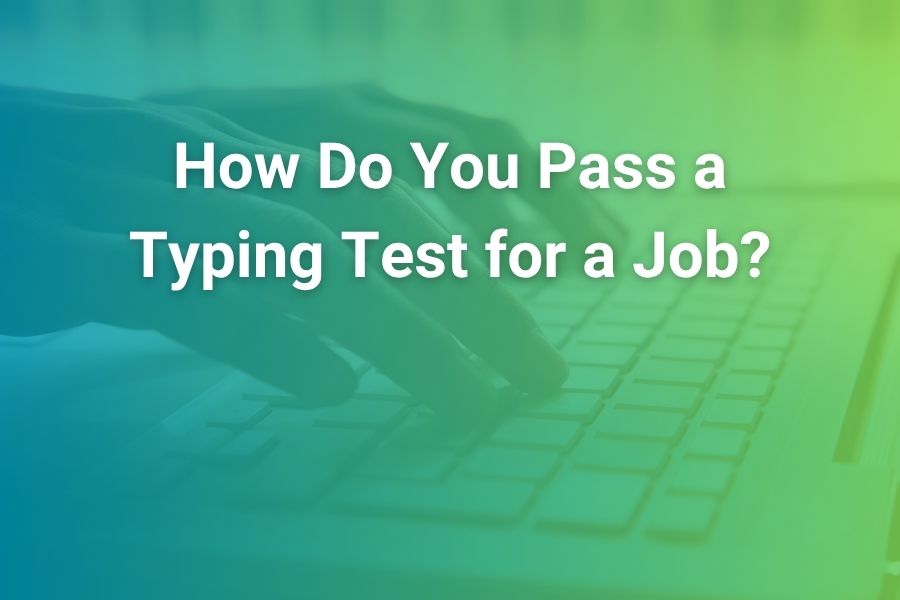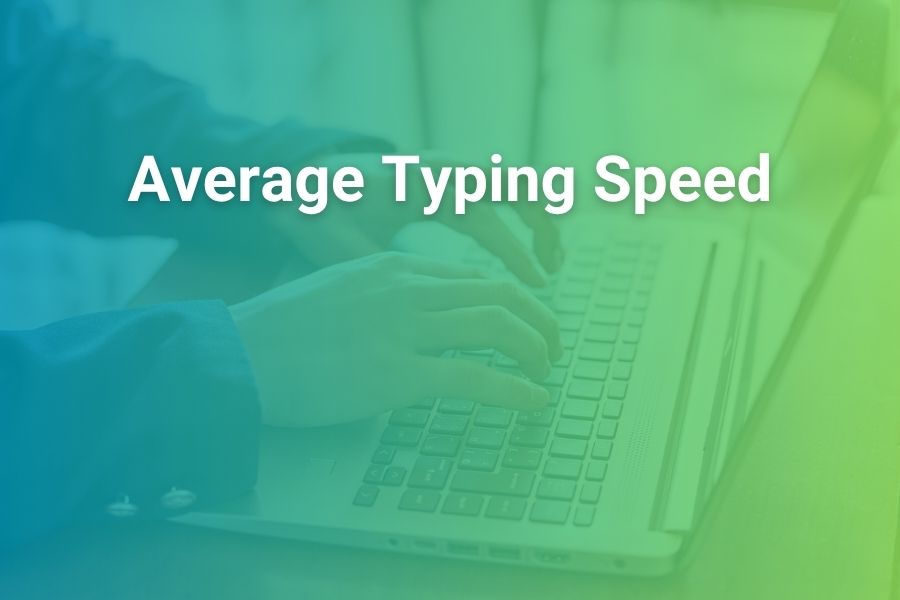
You land the interview, then see the words “typing test required.” You feel pressure, but you can beat that test with a smart plan. Most employers measure words per minute and accuracy under time limits. You need a method that upgrades both quickly.
I will show you how to train like a pro, set targets that match U.S. hiring standards, and handle test-day stress. In this article, you’ll learn the benchmarks employers use, drills that raise speed fast, accuracy tactics that stick, and a step-by-step test-day routine.
Why Employers Use Typing Tests
Employers want speed and clean output. Hiring teams measure two numbers: WPM (words per minute) and accuracy. If you rush and make errors, your effective score drops. If you type slowly but perfectly, you still lose ground to candidates who meet both targets.
Roles that handle documents, chat, email, medical records, legal dictation, or dispatching live calls need measurable skill. A typing test gives managers proof that you handle real workload pressure with few mistakes. When you understand that goal, you train with intent, not guesswork.
Know the Benchmarks Before You Practice
You pass more often when you train to clear a specific bar. Use these practical targets for a U.S. job hunt:
- Office support, clerical, reception, and customer service roles: Aim for 40–50 WPM at 95–97% accuracy.
- Data entry, legal support, and general transcription roles: Target 55–70 WPM at 96–98% accuracy.
- Medical transcription, fast-paced admin, and advanced data roles: Prepare for 65–80+ WPM with 97% accuracy.
- 911 dispatcher and emergency communications: Expect 80–85 WPM with high accuracy under stress.
- Court reporting (stenography): Specialized equipment and training; speeds can exceed 200 WPM but use different methods.
Keep the broader landscape in mind: average adult typing speed sits near 40 WPM, while skilled professional typists often hit 65–75 WPM with about 97% accuracy. If you sit around the U.S. average today, you can still pass many office tests within a few weeks if you practice the right way.
Set a Clear, Short Deadline
Pick a test date and work backward. Two to four weeks is enough for meaningful gains if you practice daily. Define a primary goal and a floor goal. For example, “Primary: 60 WPM at 97% accuracy. Floor: 50 WPM at 95%.” Your floor goal ensures you pass typical office thresholds even on an off day. Your primary goal pushes growth.
Build a Daily Plan That Works
I’ve tested many training patterns with job seekers. This 30–40 minute routine delivers consistent results:
- Warm-Up (5 minutes). Type a familiar paragraph at 70–80% effort. Loosen your hands. Focus on rhythm and clean keystrokes.
- Accuracy Drill (10 minutes). Slow to 60–70% speed. Hit every character cleanly. Practice returning both index fingers to F and J.
- Speed Sets (10–15 minutes). Run two to three short tests of 1–2 minutes each. Push pace, then review your error words.
- Targeted Fix (5–10 minutes). Build tiny drills from your misses: letter pairs (th, st, qu), punctuation, numbers, or proper names.
That simple split—warm-up, accuracy, speed, fix—covers everything you need without burnout.
Master Touch Typing (Even If You Hunt-and-Peck Today)
Touch typing wins tests. Eyes stay on the screen, not the keyboard, and your fingers return to home row after every word. If you still glance down, invest one week in fundamentals:
- Plant your index fingers on F and J (feel the bumps).
- Keep wrists neutral, elbows at your sides, shoulders relaxed.
- After each word, let your fingers “reset” to home row.
- Type phrases, not letters. Your brain loves chunking.
You will drop a few WPM while you re-learn. Stay the course. By day five, the new habit sticks and your speed rebounds above your old ceiling.
Fix the Errors That Cost You Points
Most test platforms grade by net speed, which subtracts errors. A 60 WPM run at 90% accuracy often scores worse than a 55 WPM run at 98%. You pass more tests when you trim specific mistakes:
- You add letters? Practice deletion discipline: stop, backspace once, re-type the word slowly, then resume rhythm.
- You miss double-letters (e.g., letter, address)? Run 60-second sprints with only double-letter words.
- You stumble on punctuation? Copy short news sentences with commas, quotes, and em dashes until it feels automatic.
- You slip on numbers? Drill 10-key rows and short sequences like 2025, 10/14, 555-0199.
Treat each recurring error as a “boss fight.” Beat it with a custom micro-drill and watch your accuracy jump.
Upgrade Your Equipment for Test-Day Confidence
You pass more often when your setup stays the same every day:
- Use a full-size keyboard with a comfortable key travel. Many people gain 3–5 WPM just by switching from a cramped laptop to a desktop-style board.
- Choose a chair that lets your feet sit flat, hips slightly open, and thighs level. You breathe better and keep steady rhythm.
- Place your screen at eye level to avoid neck strain. A stack of books works fine.
- Turn off keyboard sound effects and haptic gimmicks. You want steady tactile feedback, not distractions.
If the employer tests you on premises, ask whether they use an external keyboard or a laptop built-in keyboard. Practice on the same style for at least a few sessions before test day.
Train with Realistic Text, Not Just Random Words
Random-word tests build base speed, but job passages include punctuation, numbers, names, abbreviations, and formatting quirks. Balance both:
- 50% practice: mixed paragraphs with commas, quotes, dashes, and numbers.
- 30% practice: random-word speed bursts for raw pace.
- 20% practice: job-specific content—emails, meeting notes, product names, addresses, ticket numbers, or patient data (fictionalised).
That blend carries your speed into real documents where you must switch contexts without breaking rhythm.
Use Micro-Goals to Break Plateaus
Speed rises in steps, not a smooth line. When numbers stall, switch the challenge:
- Add only 2 WPM to yesterday’s best and protect 97% accuracy.
- Restrict errors to three per 100 words and let WPM float.
- Raise your comfortable baseline: run five 1-minute tests and average 50+ WPM before you chase 60.
Micro-goals feel achievable, so you win more sessions. More wins build confidence. Confidence lowers tension. Lower tension improves speed. You create a positive loop.
Build Finger Strength and Endurance
Your hands need short conditioning to hold pace through five-minute tests:
- Do three “tempo sets” a day: type 90–120 seconds at a steady beat that sits 5–7 WPM below your max.
- Finish each set with a 10-second surge. That sprint trains fast recovery and relaxed control.
Stay gentle. If your hands fatigue or tingle, stop. Shake out your arms, stretch fingers, and resume later.
Eliminate the Three Biggest Time Wasters
You pass more tests when you stop doing these:
- Looking down at the keyboard. You lose tracking and have to re-find your place.
- Over-correcting mid-word. If a test penalizes backspaces, do not fix small slips; finish the word and move on.
- Re-reading the passage. Train your eyes to travel forward. Trust your fingers to follow.
Know your platform. Some tests dock heavy penalties for corrections; others don’t. Practice both styles so you can adjust on the fly.
Track Progress Like a Pro
Numbers tell the truth and keep you motivated. Log daily WPM, accuracy, keyboard used, and three most common errors. After one week, highlight which fixes moved your score. If your speed rises but accuracy falls, shift two sessions toward accuracy drills. If accuracy sits high but speed lags, extend speed sets or shorten the text to build burst pace. Treat your log like a gym notebook.
Simulate the Real Test
Recreate the environment three times before the big day:
- Same chair, desk, keyboard, and monitor distance.
- Same session length and timer style.
- Same noise level (use white noise or a TV in the next room if needed).
- No phone in sight, no notifications, no music with lyrics.
Run a final five-minute test 48 hours before the deadline. Do not chase a personal record the night before. You need rested hands and a calm head.
Your Test-Day Routine
You pass more often when you run a simple playbook:
- Sleep 7–8 hours. Hydrate early. Eat a light, familiar meal.
- Do a gentle, two-minute wrist and finger warm-up. Roll shoulders and neck.
- Type a 2-minute warm-up passage at 70% effort to settle rhythm.
- Adjust chair height and monitor. Turn off notifications.
- Read the instructions once. Confirm whether backspaces count against you.
- Start smooth, not hot. Protect accuracy in the first 30 seconds.
- Breathe in phrases—exhale every two to three lines.
- If you mistype, decide fast: fix it only if the platform allows corrections without heavy penalty; otherwise, keep moving.
- Finish strong. Do not stop early to “double-check.” Better to add clean words than burn seconds hunting tiny errors.
- Save any report or certificate your test generates. Recruiters love proof.
Handle Nerves With Simple Cues
Performance anxiety steals speed. Use short cues your brain can obey under pressure:
- “Eyes forward, hands home.”
- “Small breaths, steady beat.”
- “Words in phrases, not letters.”
- “Accuracy first, speed follows.”
Say one cue before you start and one cue at each minute mark.
Keyboard Layouts, Shortcuts, and Text Types
Most U.S. tests use QWERTY. If you trained on alternative layouts (Dvorak, Colemak), confirm the test setting or bring your own device if allowed. Learn basic shortcuts that tests sometimes permit: Ctrl + Backspace to delete a whole word, Ctrl + Arrow to jump words, Home/End to move to line edges. If shortcuts are banned, rely on clean typing and minimal corrections. For mixed text—addresses, dates, and abbreviations—practice realistic formats: “Mon, Oct 14, 2025,” “Suite 120,” “PO Box 83902,” “Rev. 2.1,” and “Q3 FY2025.” You reduce hesitation because the patterns feel familiar.
Make Accuracy a Habit, Not a Hope
Accuracy does not appear on test day by magic. It comes from slow, mindful reps. Spend at least one-third of your daily time below full speed. Listen for a quiet, even keystroke sound. Notice when your shoulders rise—that signal means tension. Drop them. Smile slightly. It sounds odd, but a relaxed jaw relaxes hands. The metronome of your typing steadies, and errors fall. Your net WPM climbs even if your raw WPM barely moves.
Push Past the 50–60 WPM Plateau
Many candidates stall here. Use these two levers:
- Shorter bursts, higher pace. Run 30–45 second sprints at a speed 5–10 WPM above your current max. Rest fully between sets.
- Phrase previewing. Train your eyes to lead by three to five words. You feed your fingers a steady pipeline instead of starving them one word at a time.
These two tactics usually unlock another 5–10 WPM within two weeks when you keep accuracy drills in the mix.
Build a Portfolio of Proof
After you hit your target, run three tests on different platforms and save the PDFs or screenshots. Recruiters respond well to consistent results across sources. Label each file with your name, WPM, accuracy, date, and keyboard used. When you apply, mention “Verified 62 WPM at 97% accuracy (three platforms, October 2025).” Clear, recent, and credible beats vague claims.
Common Mistakes That Sink Good Candidates
- Training only with long passages. Short tests build pace that transfers to longer runs.
- Ignoring numbers and symbols. Real office text uses both all day.
- Practicing only when tired. Morning sessions often produce higher quality reps.
- Changing keyboards every week. Consistency builds muscle memory.
- Chasing personal records every day. Your hands need easy wins and recovery.
Fix these and your pass rate climbs immediately.
A Two-Week Crash Plan (If the Interview Is Soon)
Day 1–2: Baseline tests, install touch-typing habits, and set targets.
Day 3–5: Heavy accuracy work, light speed bursts, log errors by type.
Day 6–7: Mix real-world passages, add numbers and punctuation drills.
Day 8–10: Raise burst speed with 30–60 second sprints; maintain 95–97% accuracy.
Day 11–12: Full-length tests at goal pace; simulate test environment.
Day 13: Taper. Two short accuracy sets, one moderate test.
Day 14: Test day routine, calm rhythm, accuracy first, finish strong.
Final Word: Pass by Design, Not Luck
Treat your typing test like athletic performance. You have a clear metric, a tight plan, and a proven cadence. Aim for the threshold your role demands, guard your accuracy, practice with realistic text, and simulate the pressure before it counts.
Do that, and you will not just pass—you’ll walk in confident, deliver the numbers, and walk out with momentum for the offer.






